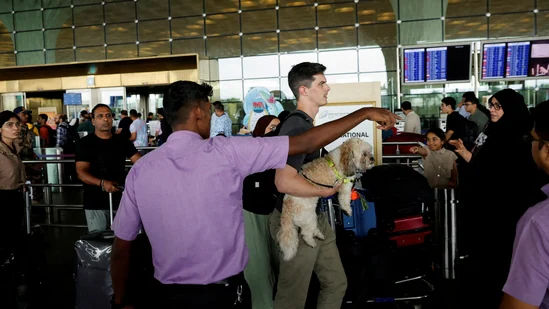
Mumbai
On Saturday, August 9, 2025, Mumbai’s aviation powerhouse found itself in turmoil as a third-party data network outage brought its operations to a painful crawl. In the middle of the bustling weekend rush, check-in systems froze, baggage processing went analog, and hundreds of flights were thrown off schedule in what felt like a throwback to pre-digital chaos.
Digital Lockout at the Busiest Weekend
The city’s second-busiest airport—Chhatrapati Shivaji Maharaj International Airport (CSMIA)—went offline at approximately 4:15 PM, severing check-in systems and paralyzing Wi-Fi services. Within minutes, long queues snaked through terminals as staff scrambled to process passengers manually.
FlightRadar24 data later revealed the tangible fallout—average departure delays of 30–45 minutes, with ripple effects rolling through the evening. The outage lasted until around 5:30 PM, though strains on operations continued to linger well afterward.
Air India Sounds the Alarm
Tata-owned Air India promptly took to X (formerly Twitter), confirming the outage but assuring travelers that systems were being restored. Their advisory urged passengers to arrive early, monitor flight updates via their app or website, and prepare for lingering delays as the airport gradually resumed normalcy.
Manual Mode: Old-School Procedures Return
With digital systems offline, frontline staff resorted to tried-and-tested manual processes—handwritten boarding passes, face-to-face check-ins, and analog data logs. The sudden surge in workload and human intervention quickly overwhelmed terminals.
A passenger onboard a delayed Mumbai–Delhi flight vented on X:
“Server outage at Mumbai airport…. the system seems to be not functioning”
— a sentiment echoed by anxious flyers across terminals.
Chaos Amid the Crowd
Weekend traffic by itself would test any airport—add a digital collapse, and the terminals were in pandemonium. Congested check-in counters, delayed departures, strained airline staff, and weary travelers marked the scene. Some operations continued into manual overtime even as technical fixes took effect behind the scenes.
The Restoration Path
By early evening, system engineers had restored most network functionality. Still, the backlog in passenger flow and flight preparations meant delays persisted despite the return of digital order. Air India cautioned that full normalization could take time.
Beyond the Delay: Lessons in Vulnerability
This incident underscores a stark reality: even a world-class airport like CSMIA is critically dependent on digital infrastructure. A single third-party failure can stall nearly all operations—from check-ins to luggage handling—paralyzing efficiency.
This isn’t Mumbai’s first brush with tech troubles. In March 2024, a radar automation system glitch caused two-hour delays, raising alarms over outdated systems. Meanwhile, past outages—from fiber-cuts to cloud disruptions—have previously triggered airport backups and manual workarounds.
What Travelers Must Know
Facing increasing digital vulnerabilities, here’s what fliers should do:
- Arrive early—manual processing takes time.
- Always check real-time flight status via the airline’s official platforms.
- Be prepared for analog procedures—carry physical ID, patience, and a flexible mindset if screens go dark.
Wrapping Up: Network Failures in a Digital World
This outage wasn’t just inconvenience—it was a disruptive flashback to a manual era. On India’s busiest air travel day, Mumbai airport’s digital blackout revealed fragilities hidden behind sleek screens. While systems are restored, the episode leaves one resounding truth: resilience isn’t just about restoration—it’s about redundancy.
The weekend scramble at CSMIA should serve as a stark warning: as airports sprint into digital futures, shoring up fallback operations must follow just as fiercely behind.
Thnaks For Reading